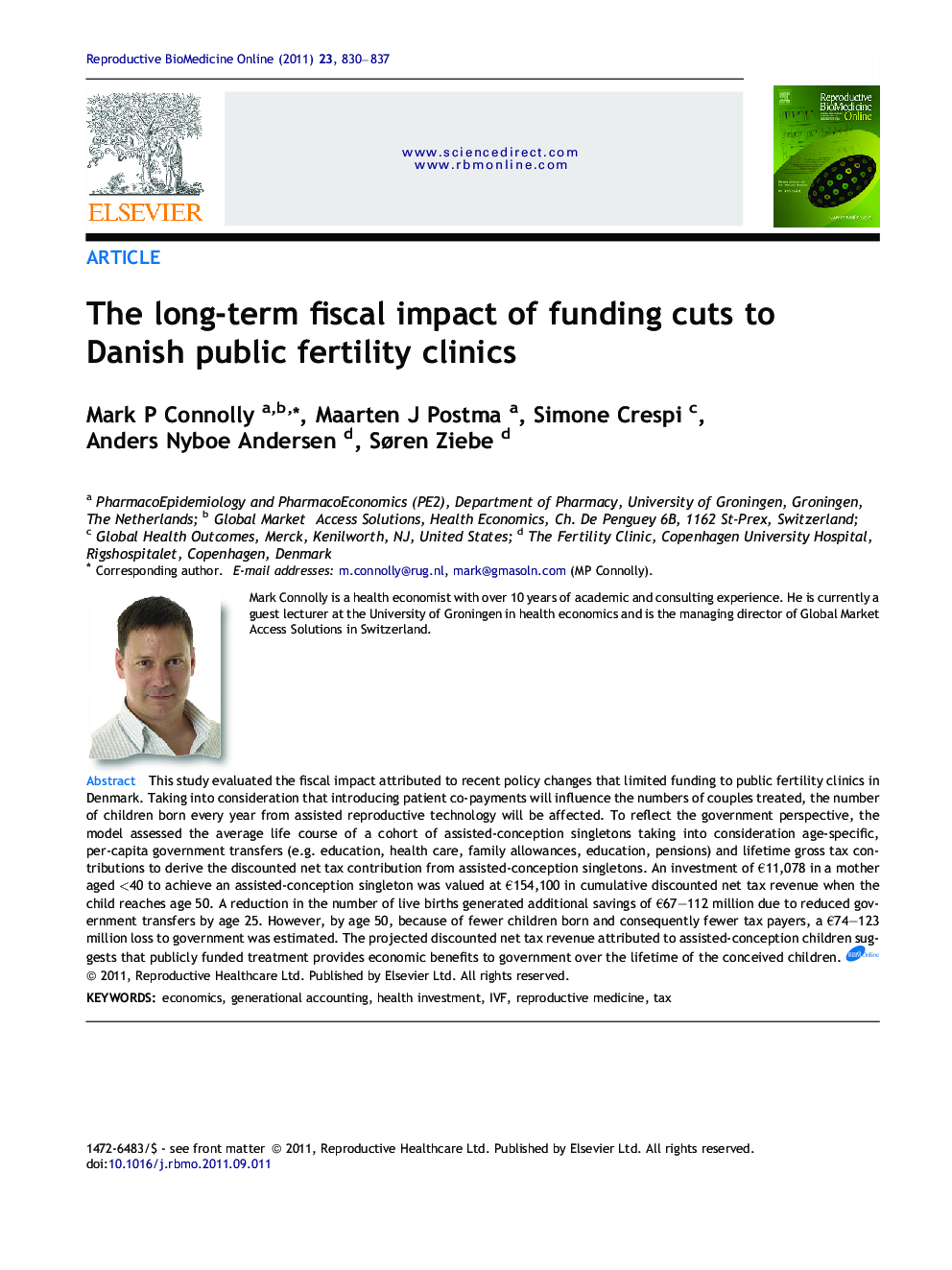| Article ID | Journal | Published Year | Pages | File Type |
|---|---|---|---|---|
| 3971157 | Reproductive BioMedicine Online | 2011 | 8 Pages |
This study evaluated the fiscal impact attributed to recent policy changes that limited funding to public fertility clinics in Denmark. Taking into consideration that introducing patient co-payments will influence the numbers of couples treated, the number of children born every year from assisted reproductive technology will be affected. To reflect the government perspective, the model assessed the average life course of a cohort of assisted-conception singletons taking into consideration age-specific, per-capita government transfers (e.g. education, health care, family allowances, education, pensions) and lifetime gross tax contributions to derive the discounted net tax contribution from assisted-conception singletons. An investment of €11,078 in a mother aged <40 to achieve an assisted-conception singleton was valued at €154,100 in cumulative discounted net tax revenue when the child reaches age 50. A reduction in the number of live births generated additional savings of €67–112 million due to reduced government transfers by age 25. However, by age 50, because of fewer children born and consequently fewer tax payers, a €74–123 million loss to government was estimated. The projected discounted net tax revenue attributed to assisted-conception children suggests that publicly funded treatment provides economic benefits to government over the lifetime of the conceived children.In January 2011, the Danish Parliament introduced a law that limited reimbursement to publicly funded fertility clinics in Denmark. Because reimbursement for fertility services can influence couples’ ability to receive treatment, this will consequently result in fewer children being born each year. To inform the policy decision, this study assessed the fiscal consequences of the policy change on the government over many generations. The analytical framework discussed here estimates the net tax revenue of a cohort of assisted-conception children and the discounted net tax revenue that these children pay to the Danish government over their lifetime. The analysis illustrates that the government will save more costs than those directly related to public fertility services because fewer children are likely to be born and consequently to require government services (e.g. education, health care, family allowances). However, over time as the assisted-conception cohort matures and enters the work force. the reduced number of assisted-conception children, attributed to the funding cuts, will negatively impact government accounts due to lost tax revenue. The policy analysis described here suggests that the economic impact of the fertility policy change is dependent on the time frame over which the analysis is considered. In the short term, it is possible to save on assisted reproduction treatment costs; however, taking into consideration the life course of the diminished size of the assisted-conception cohort, this will negatively influence government accounts in the future.
